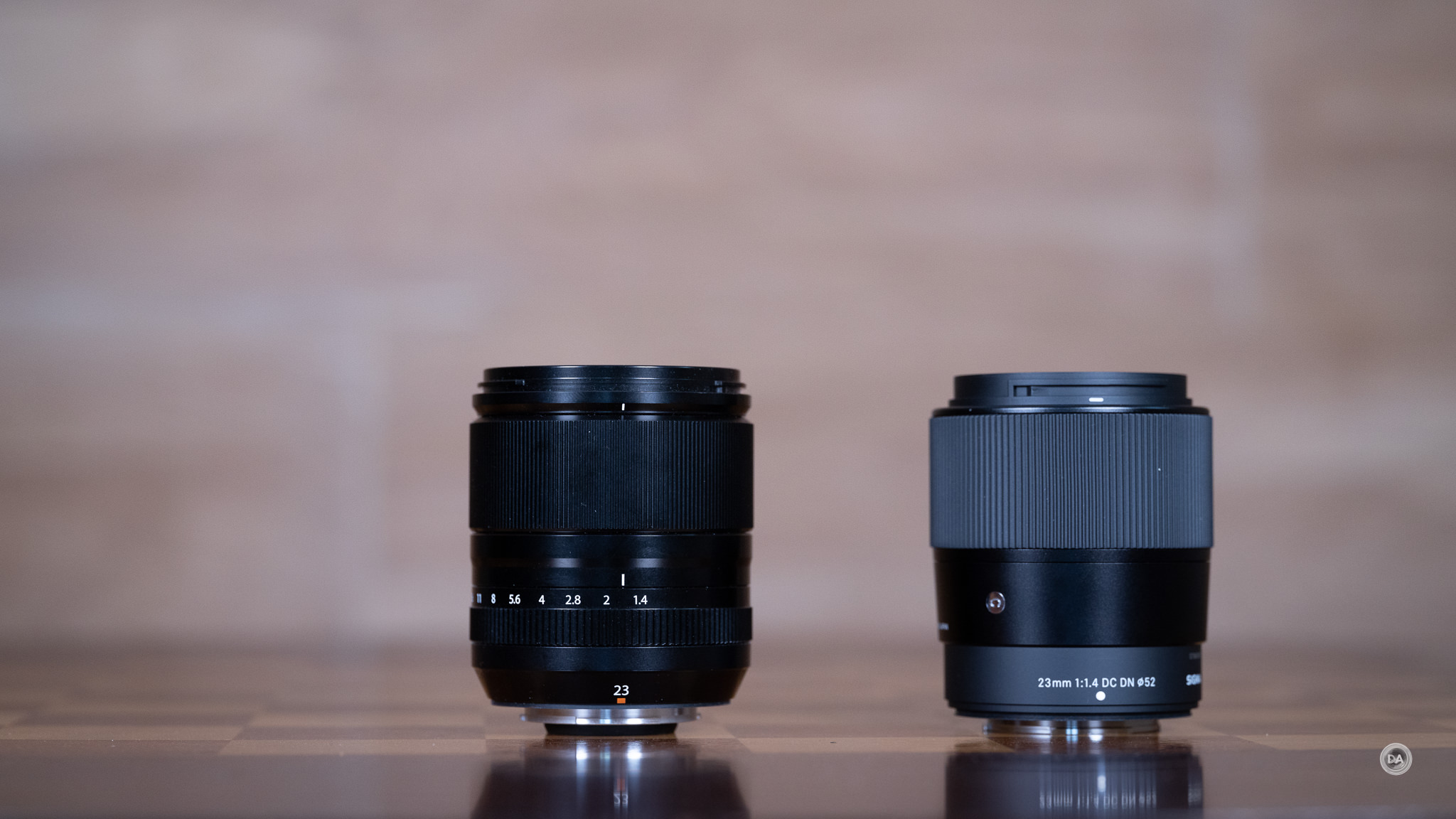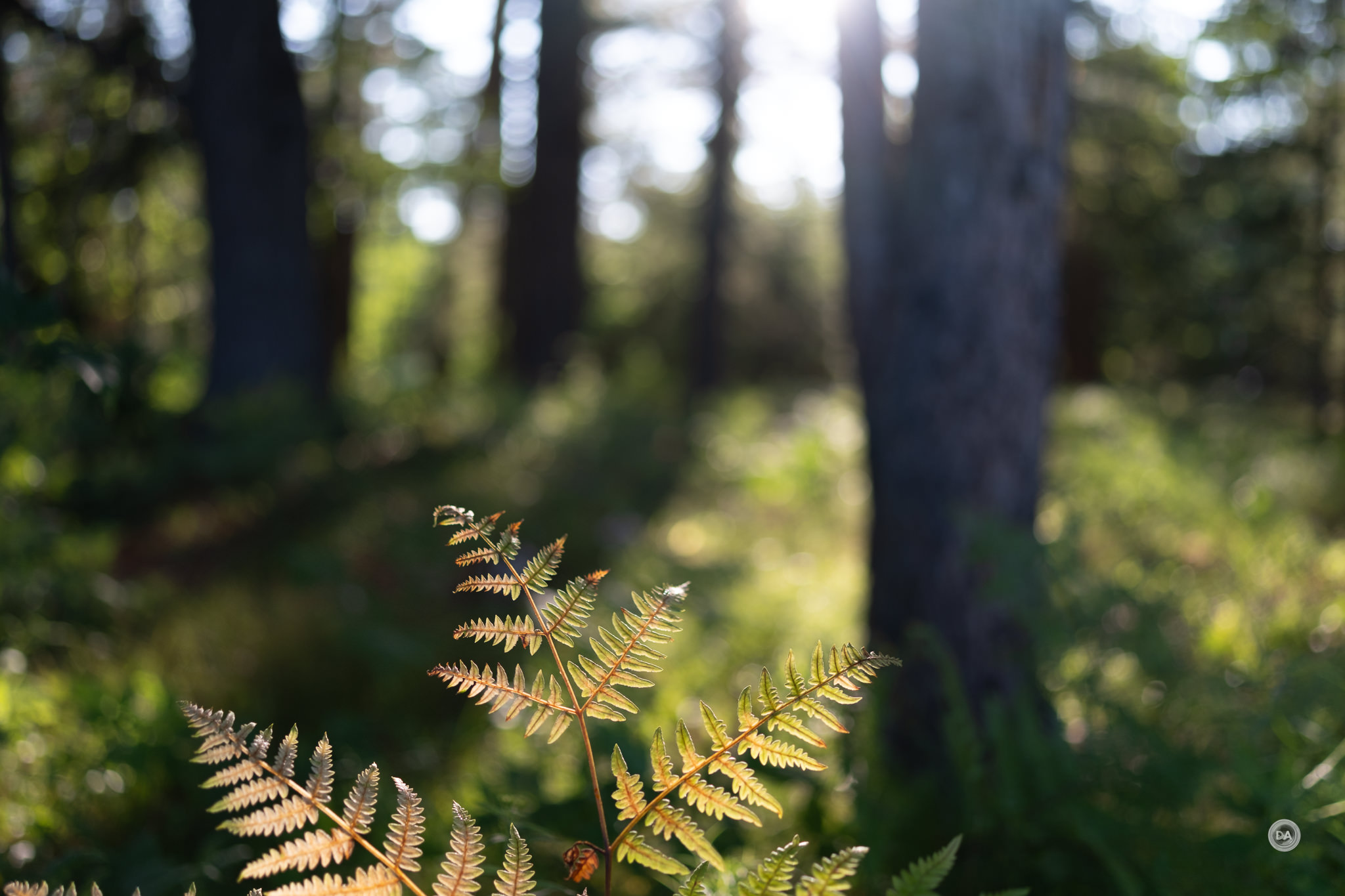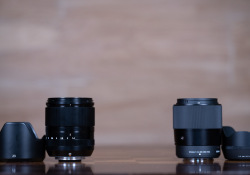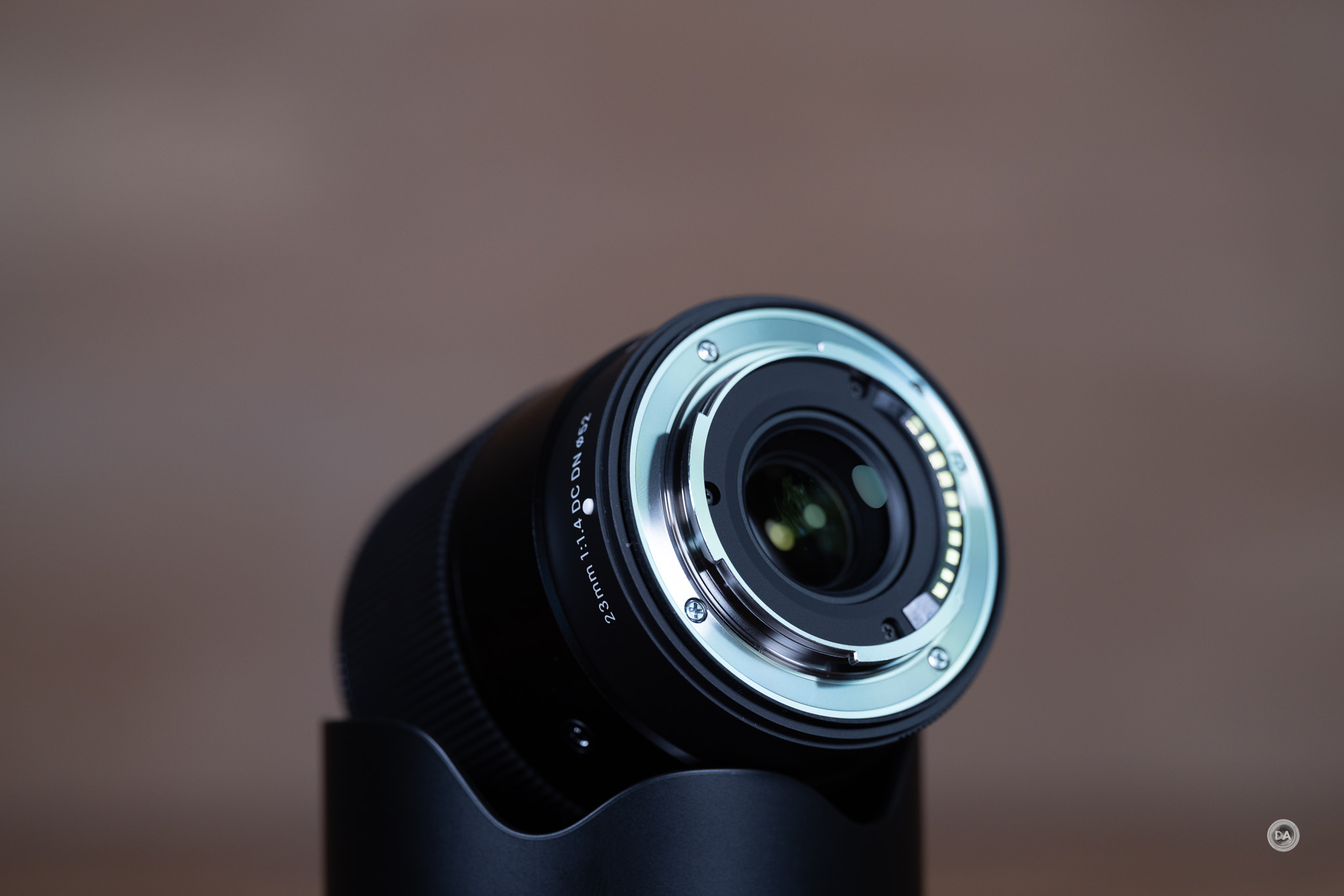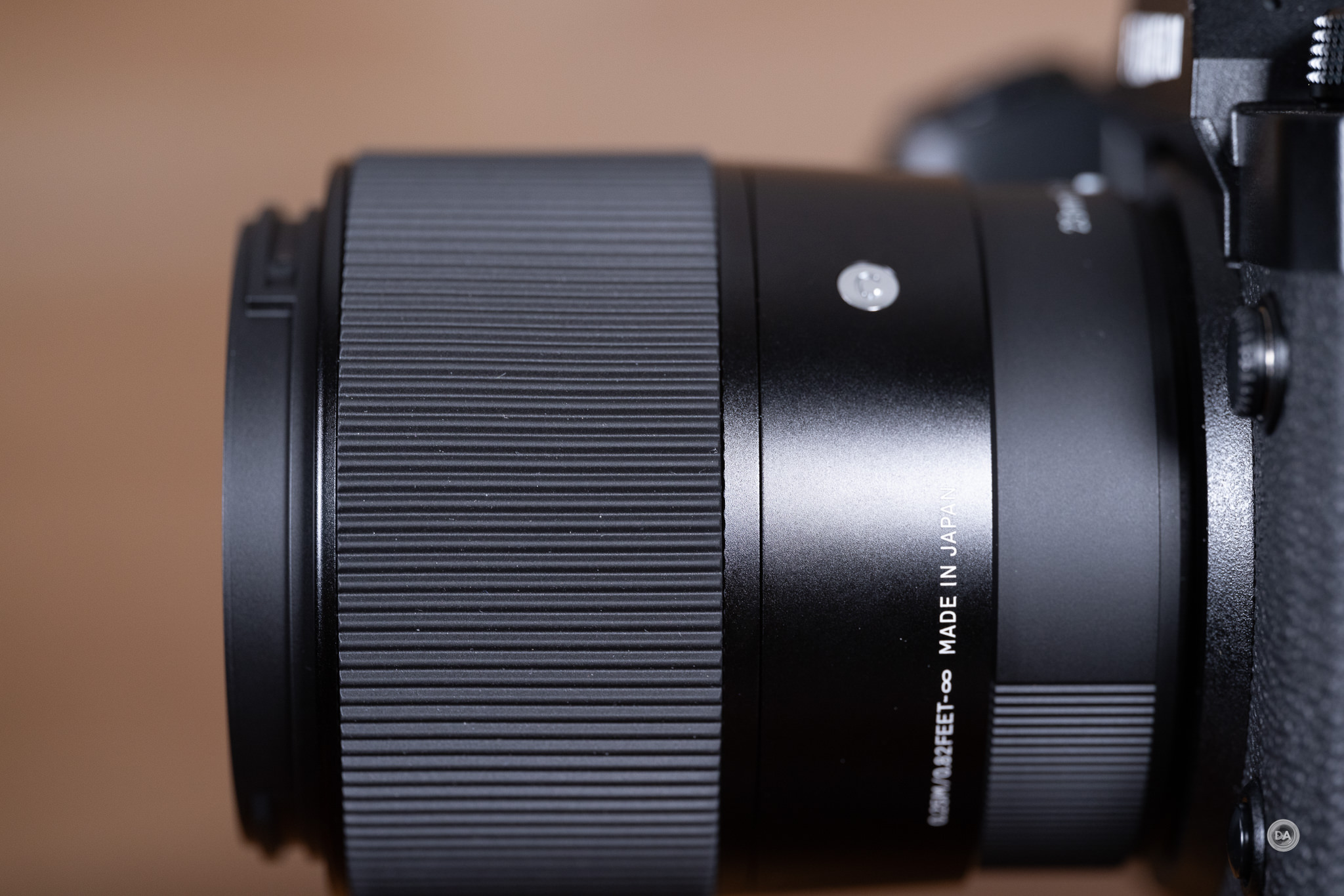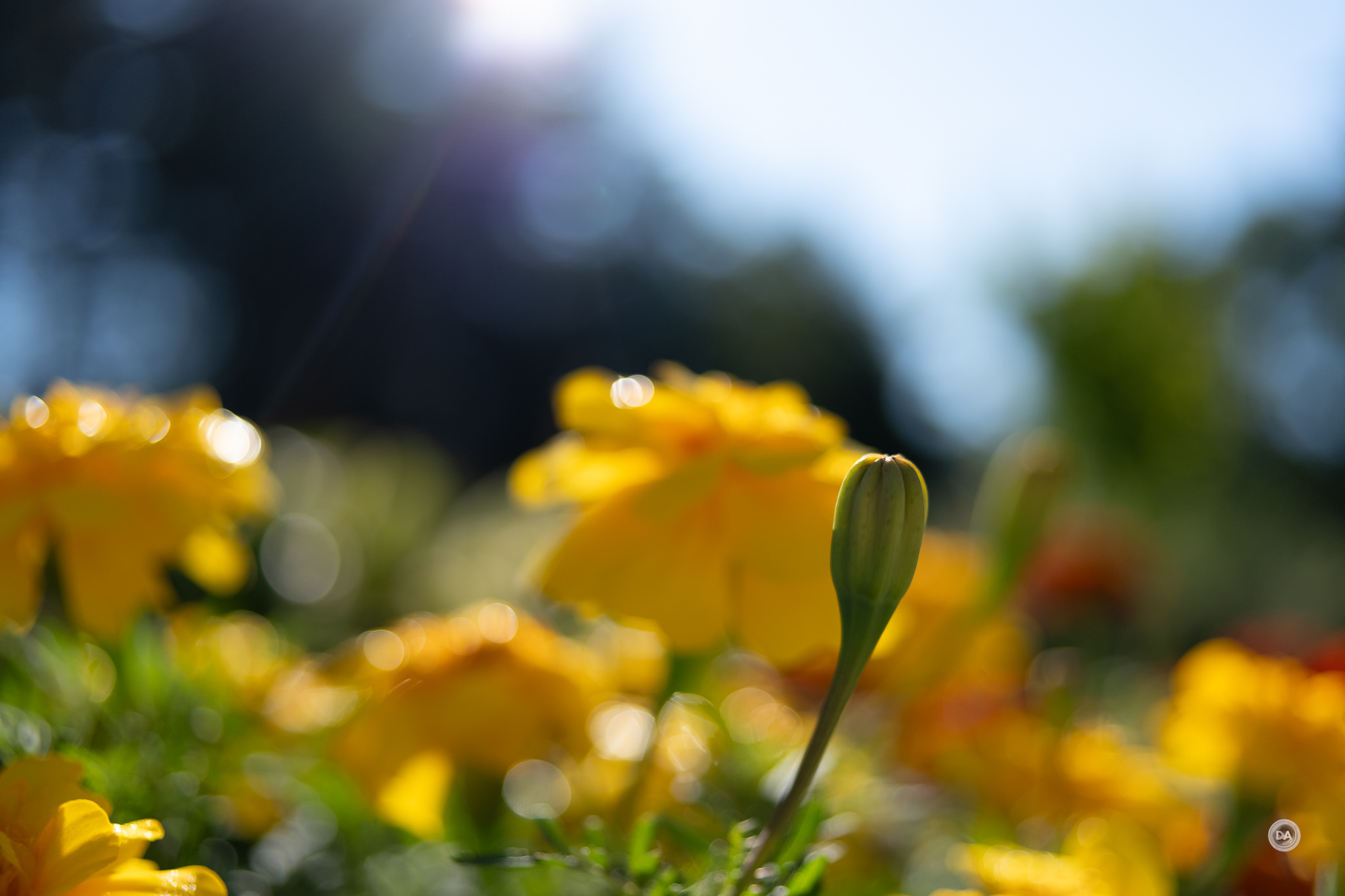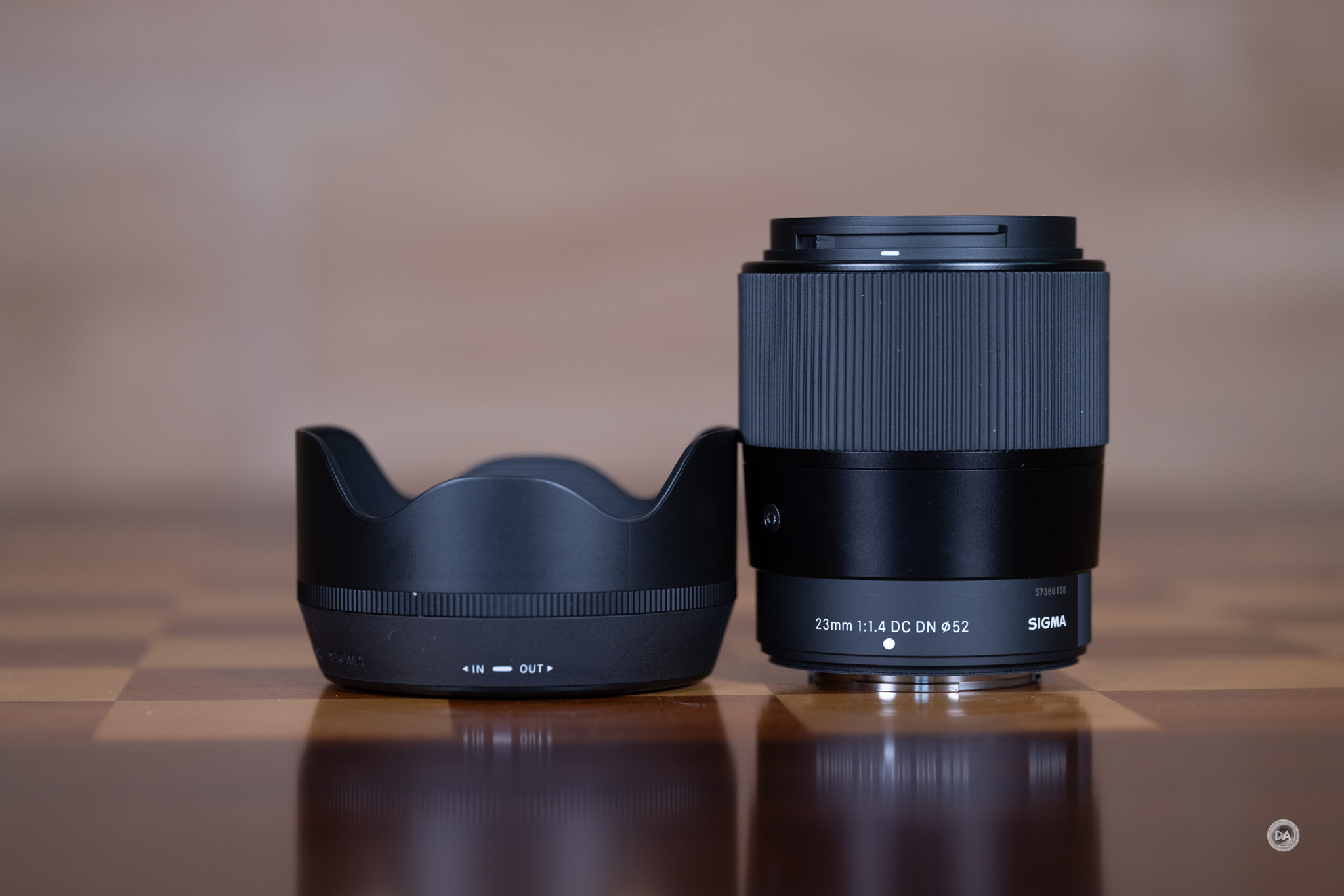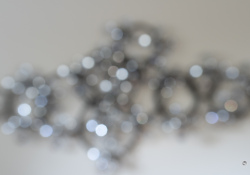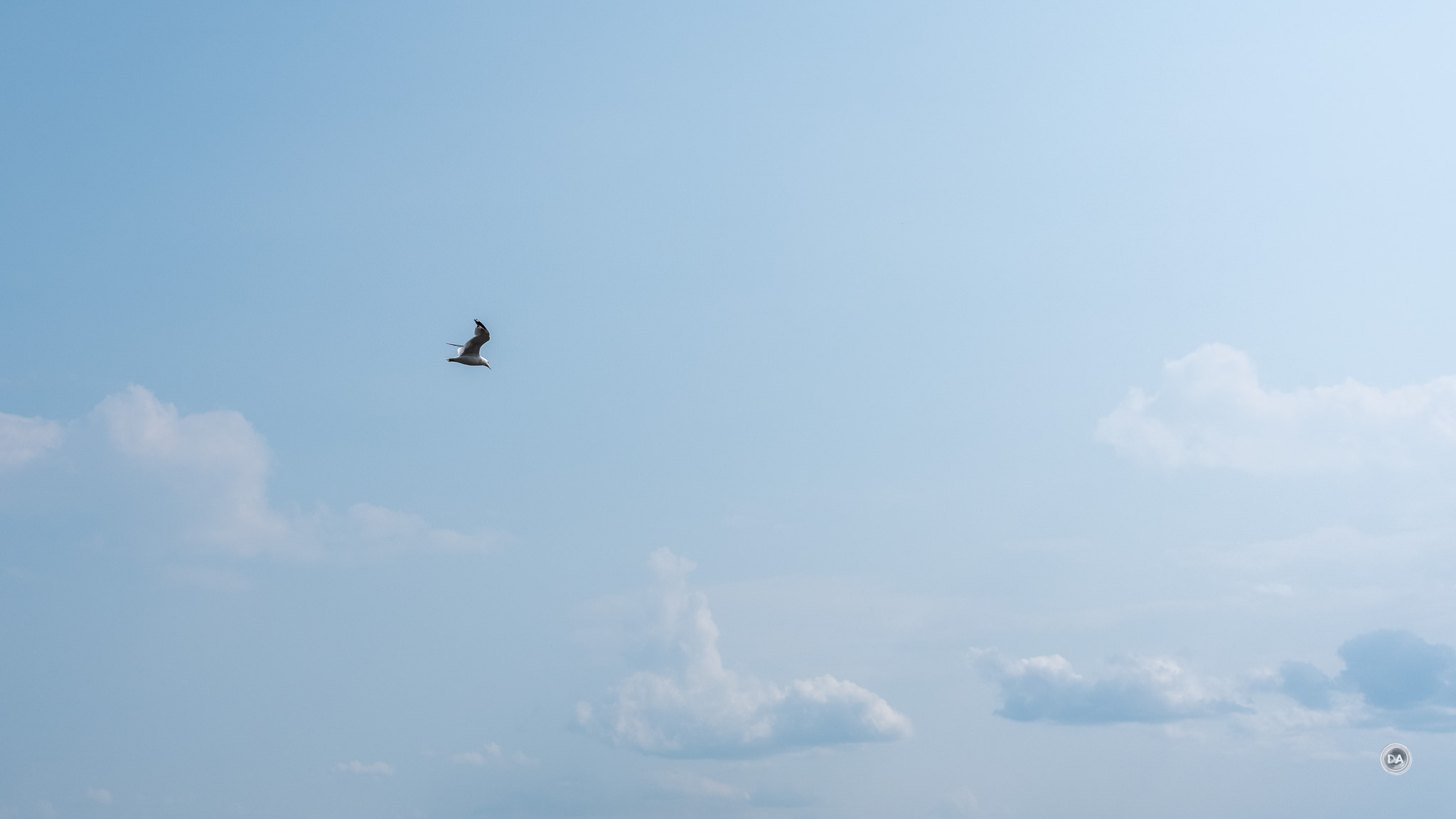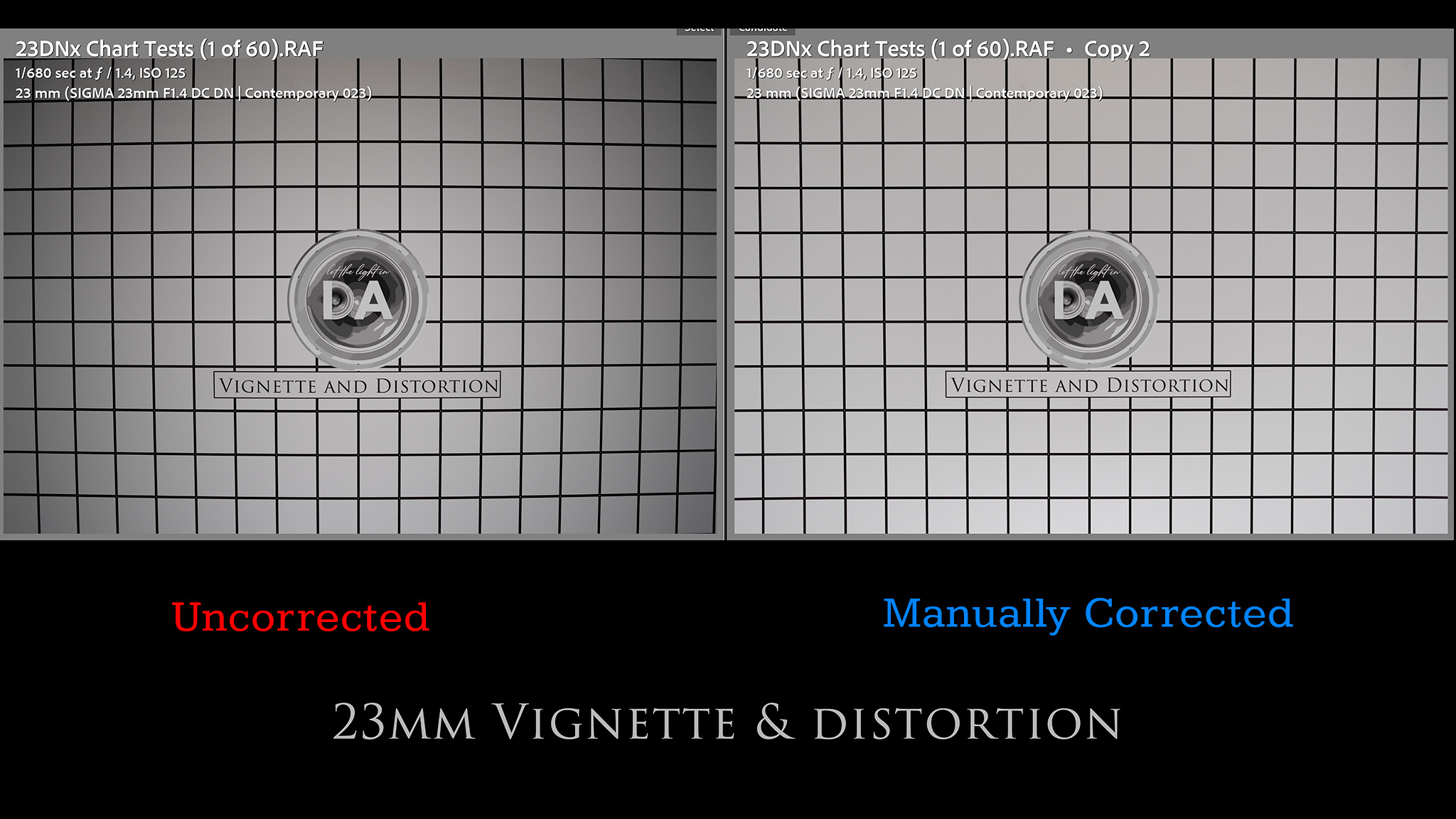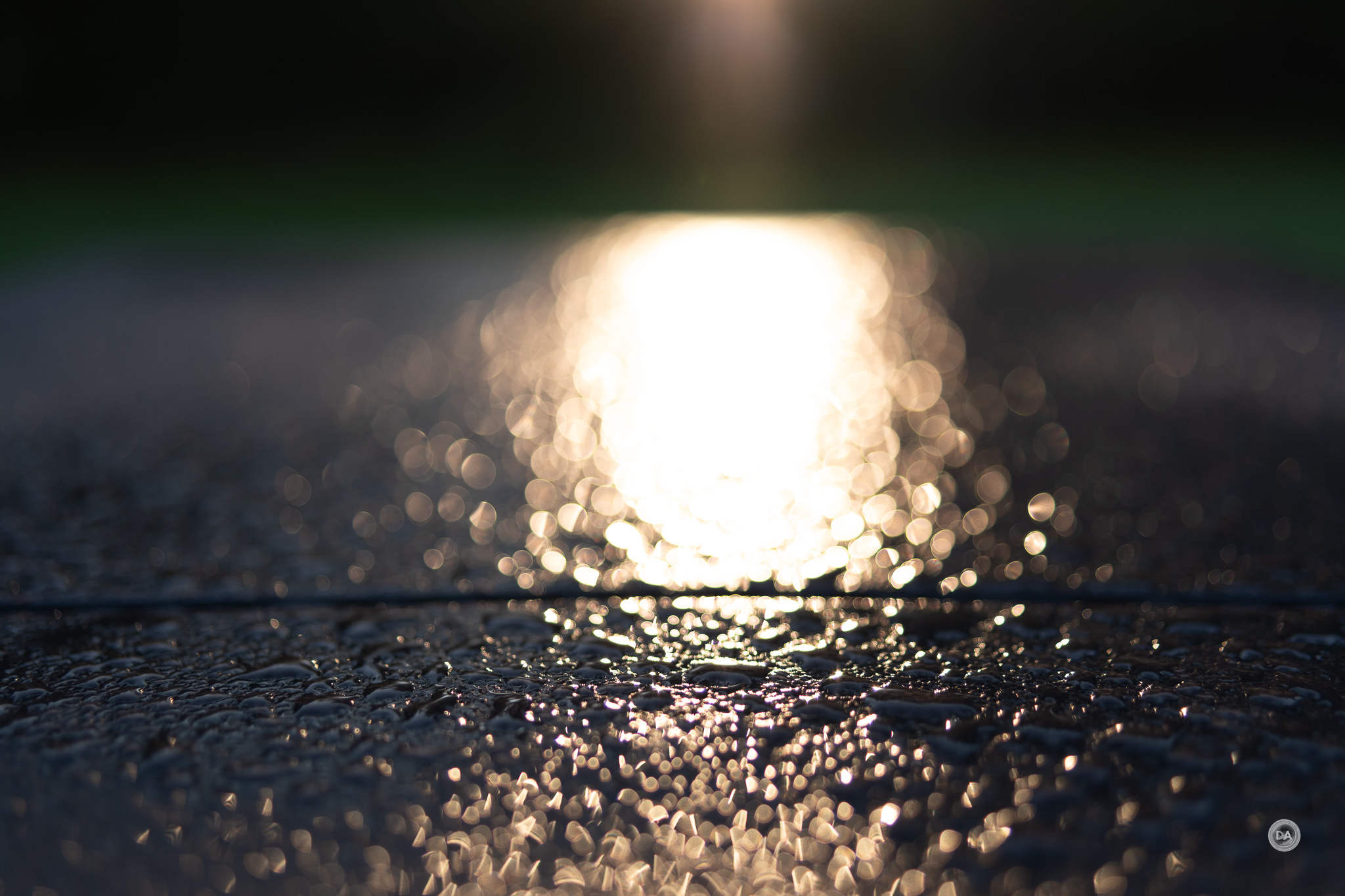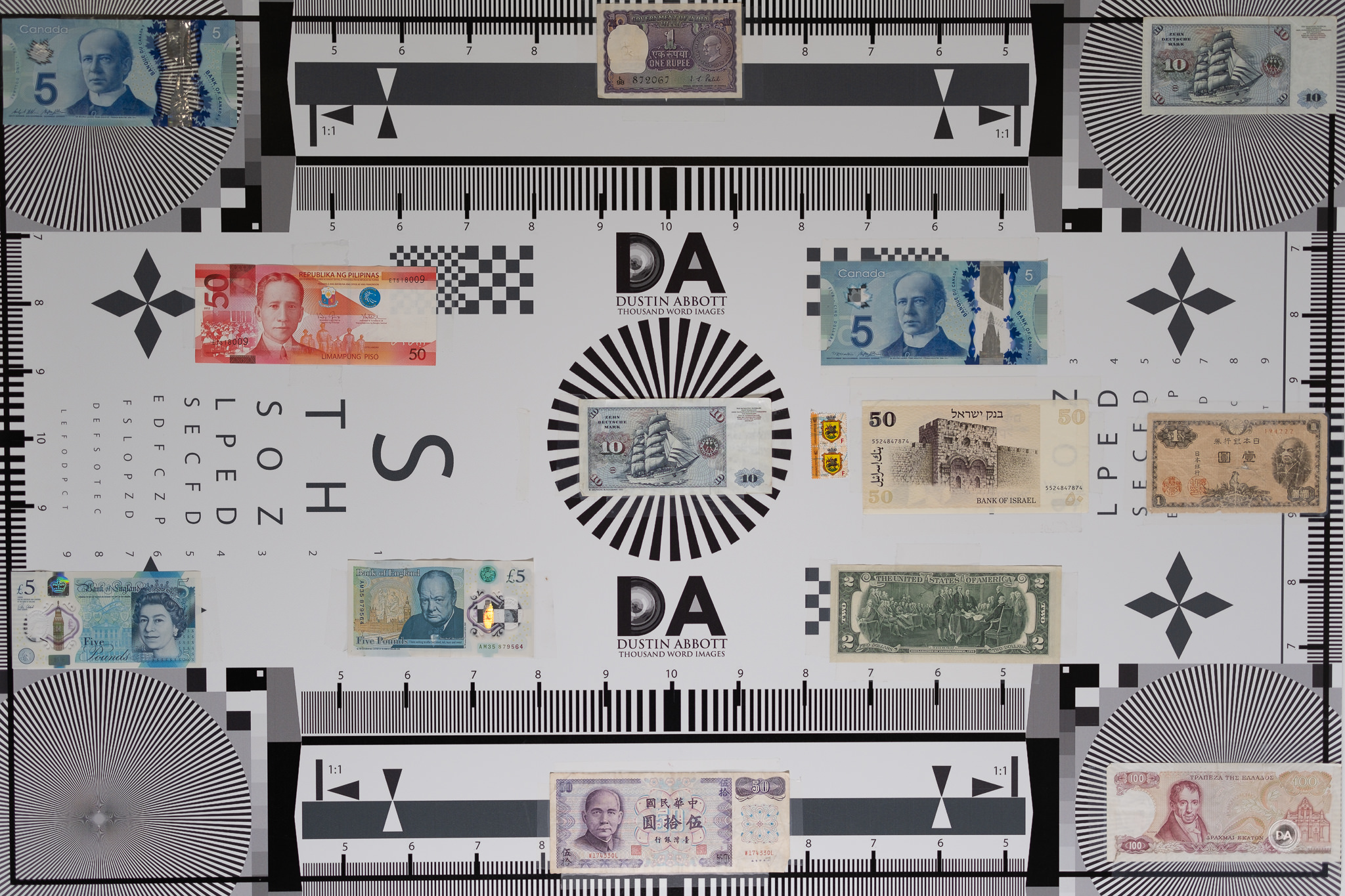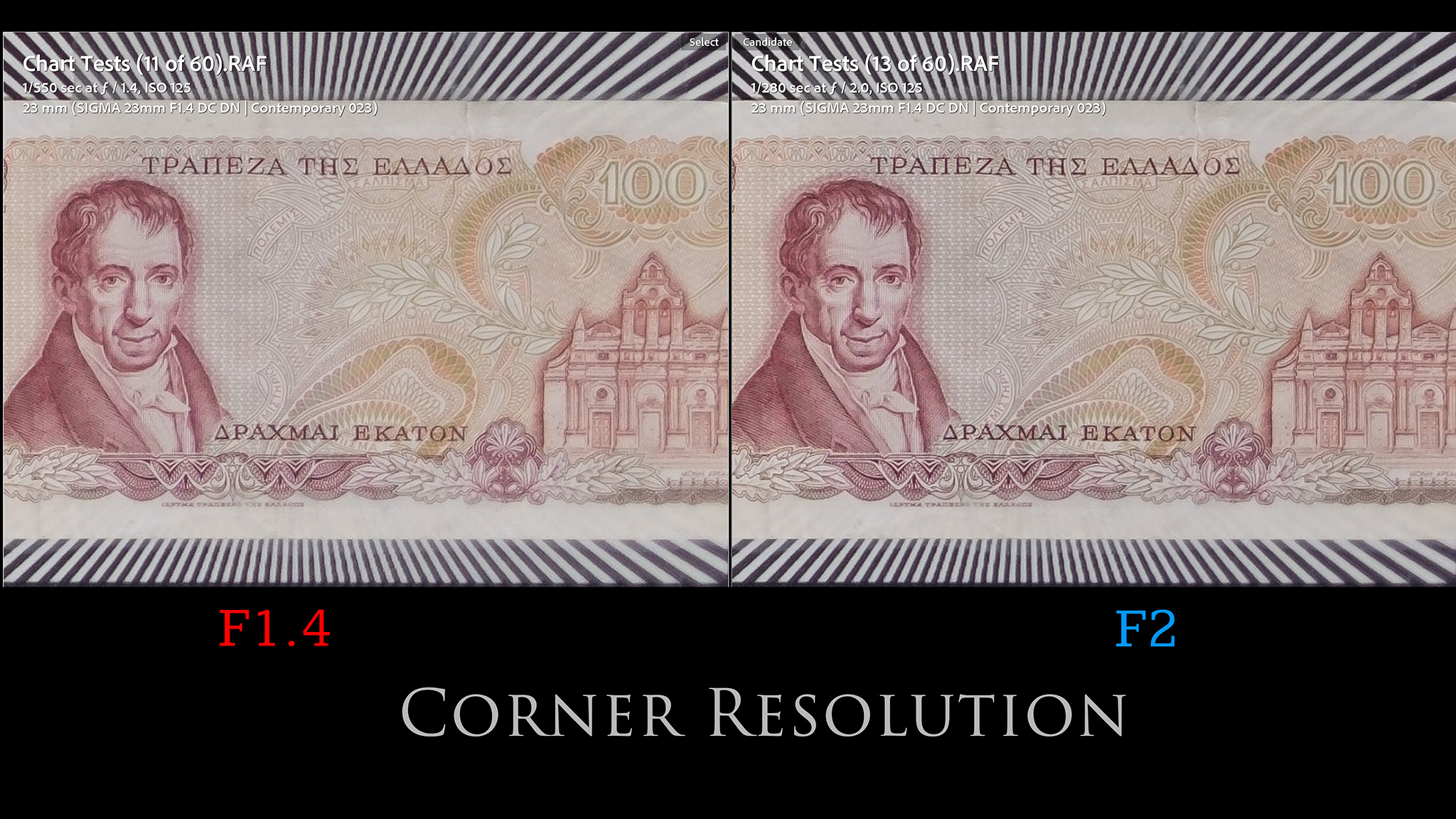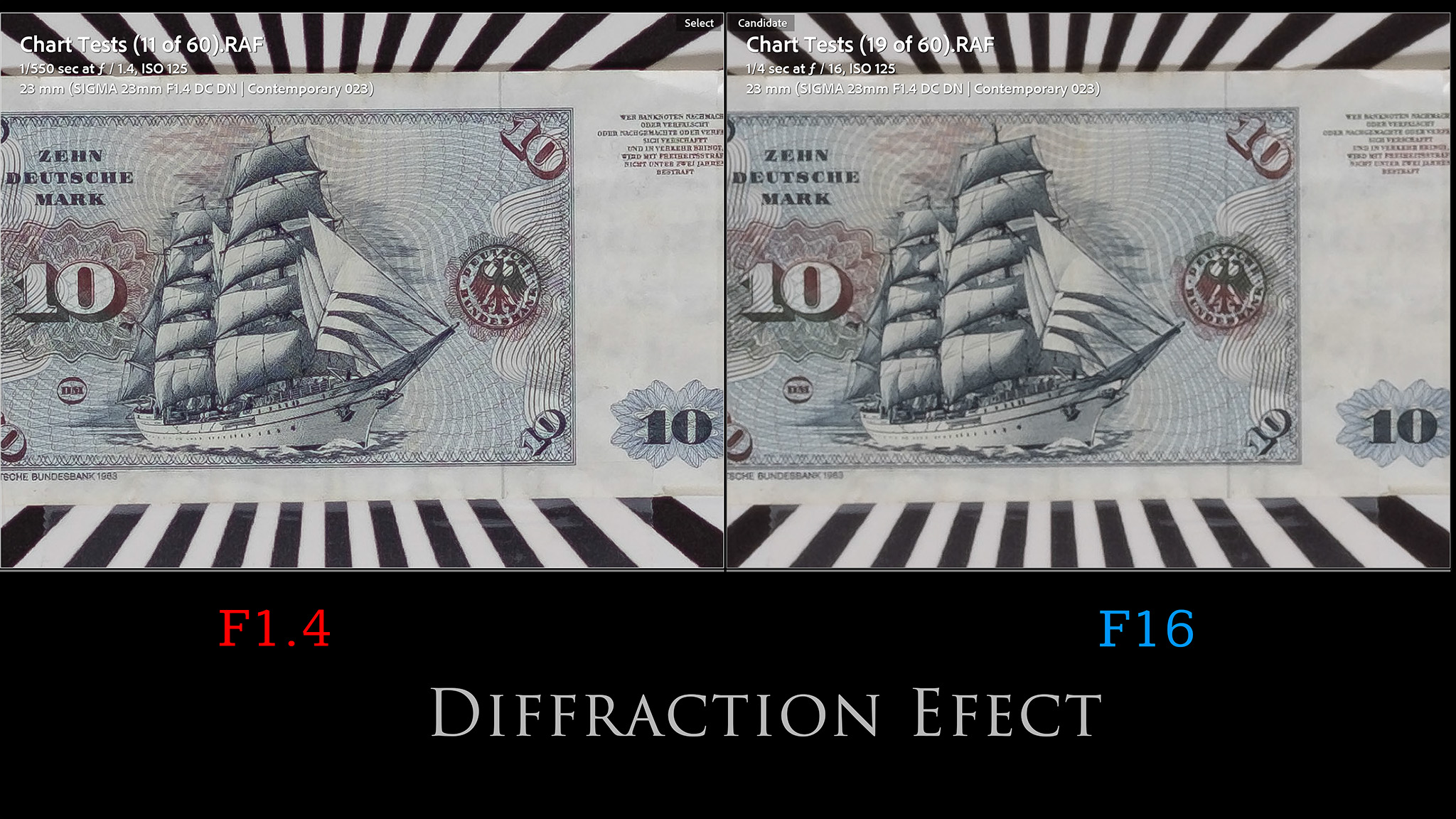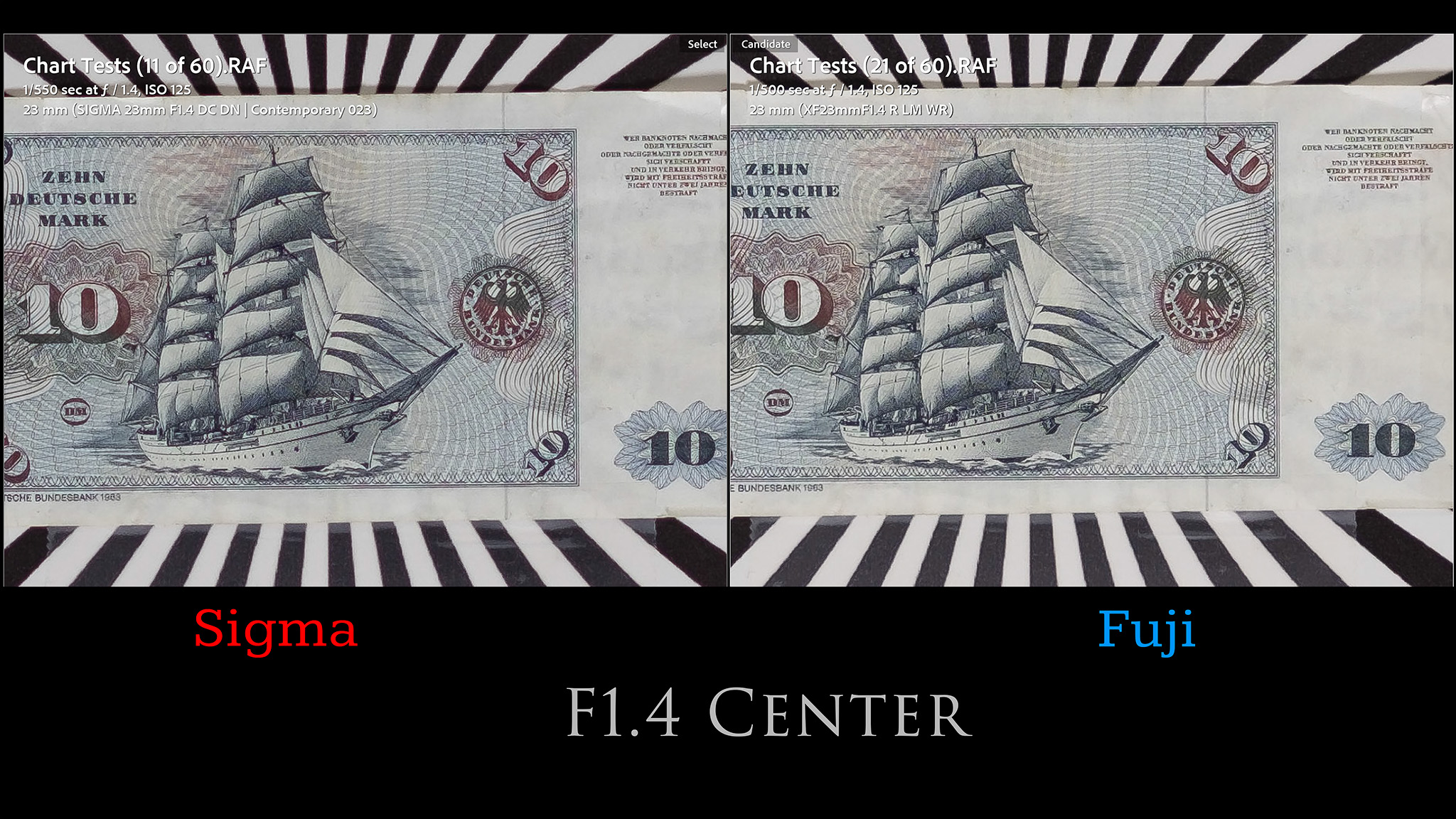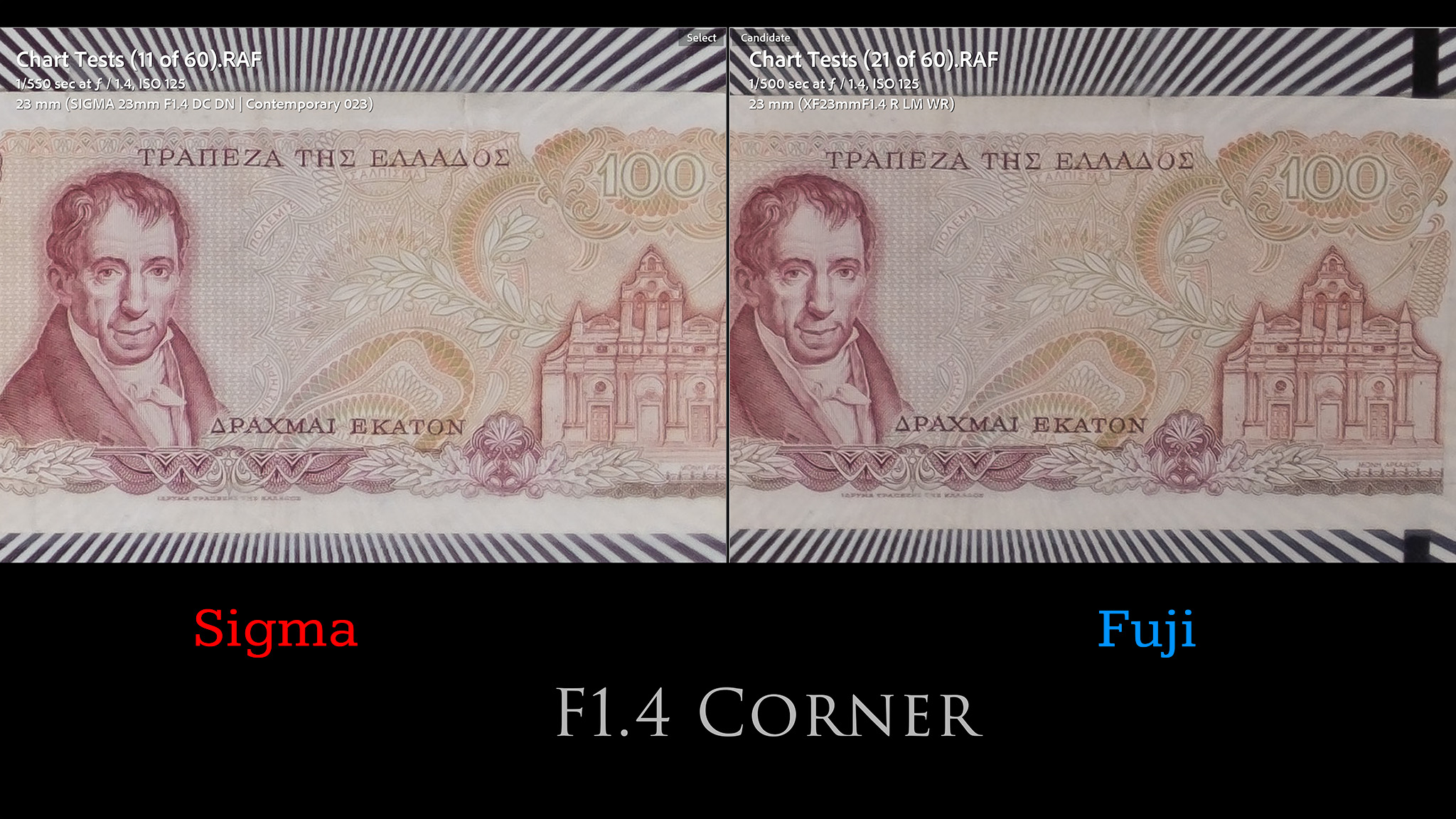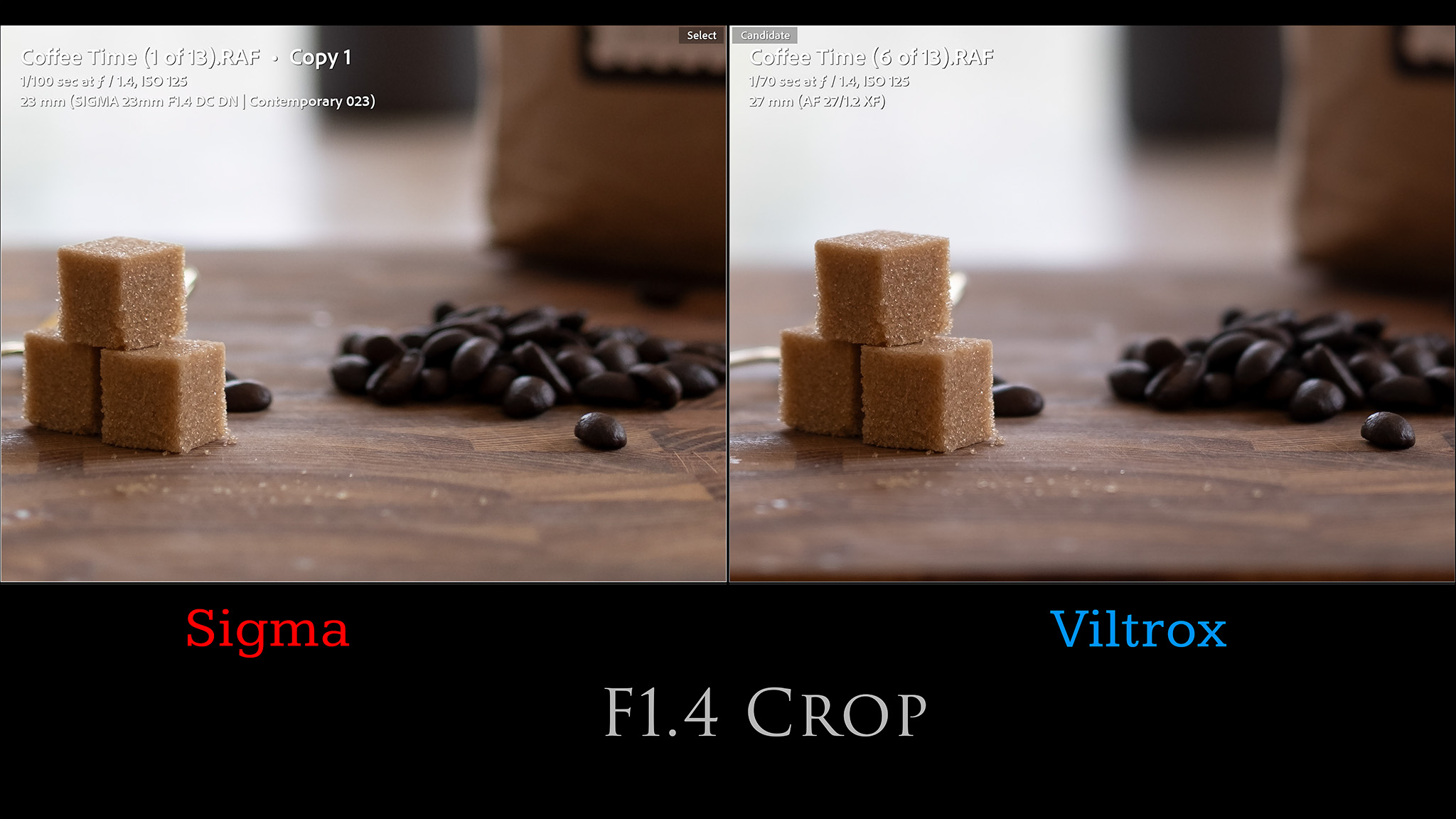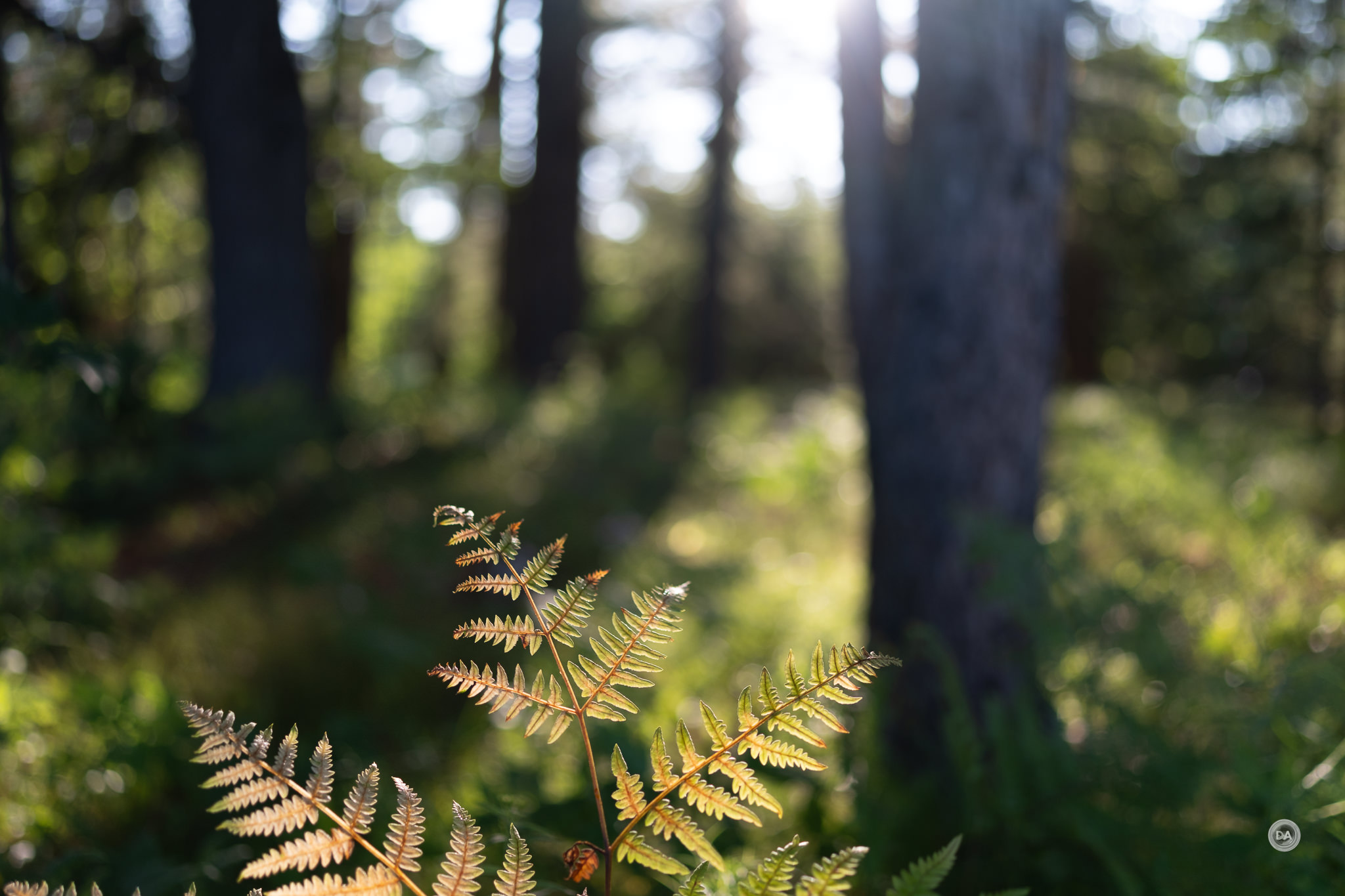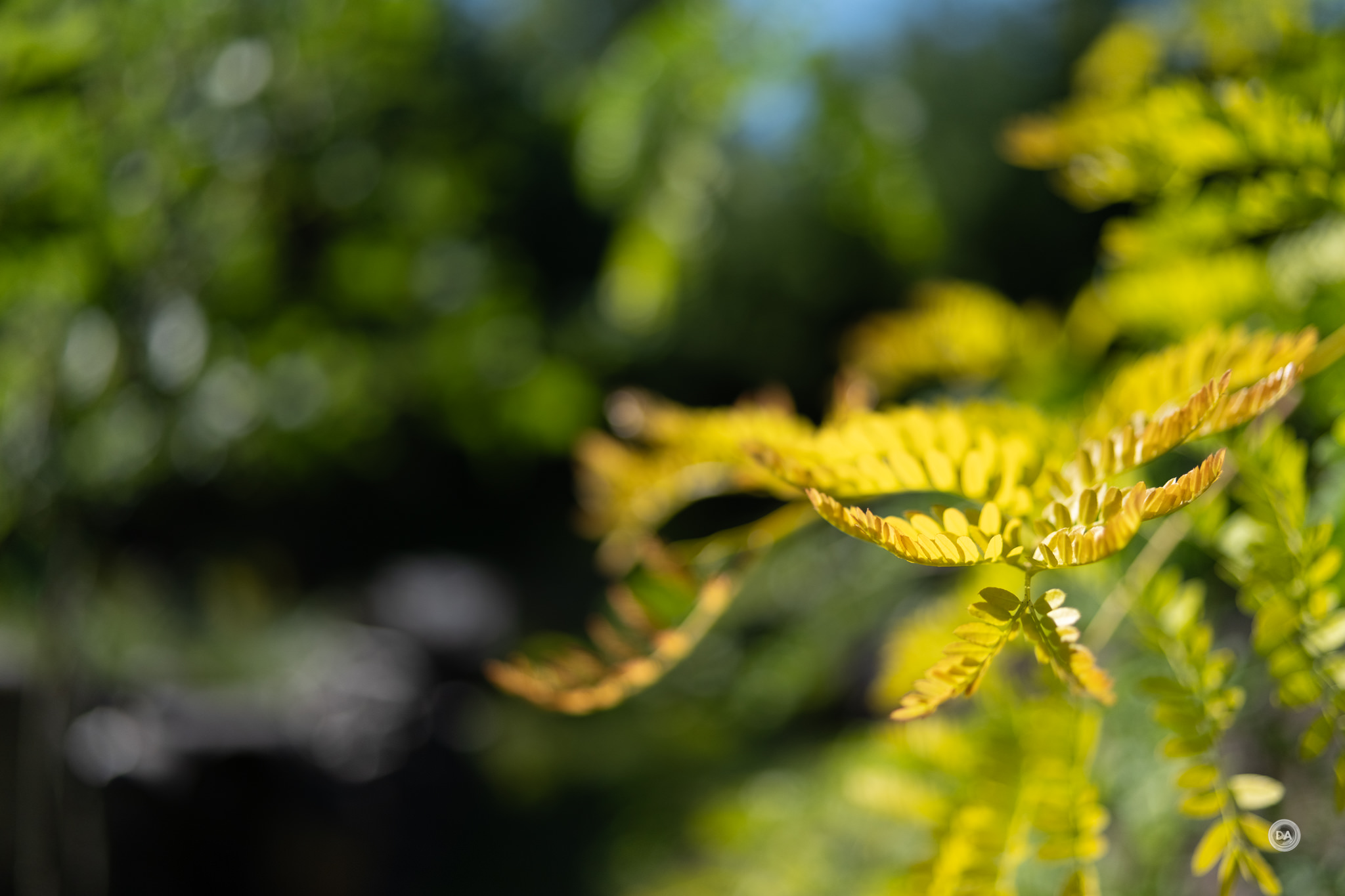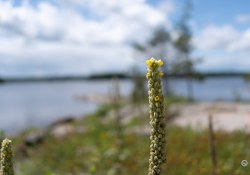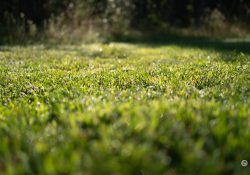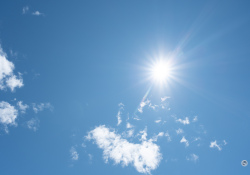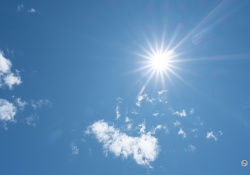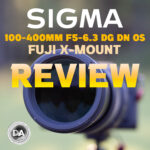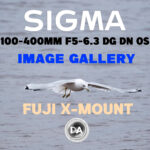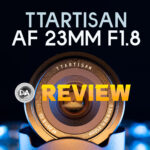When I completed my review of the Sigma 23mm F1.4 DC DN on Sony E-mount several months ago, I noted that I really anticipated its release on Fuji X-mount for the simple reason that it felt like it was sharp enough to handle the huge resolution of Fuji’s 40MP APS-C sensors. I now have had an opportunity to put that theory to the test, and, even more tellingly, have just completed reviewing Fuji’s own premium 23mm F1.4 (the XF 23mm F1.4 R LM WR – my review here), which gives me a very natural point of comparison. The Sigma 23mm F1.4 DC DN Contemporary is (according to Sigma) the APS-C equivalent of their 35mm F1.4 DN ART lens, though, as we’ll see, Sigma’s design brief for the APS-C series follows a different formula than their full frame lenses. Here’s a look at the DC (APS-C) DN (mirrorless) lineup thus far.
Sigma’s DC DN series has become even more important now that Fuji has lifted their restrictions on third party development for the platform, as the Fuji X-mount is a place where these lenses can really thrive – particularly considering that fact that Sigma likes to make high resolving lenses and Fuji currently has the highest resolving APS-C cameras! I’m doing this review the Fujifilm X-H2 and its 40.2MP sensor! There are also cheaper 23mm F1.4 options on Fuji, including the Tokina ATX-M 23mm F1.4 ($299 USD)and the Viltrox 23mm F1.4 ($299 USD). This Sigma 23mm DN is the closest actual rival to the premium XF 23mm F1.4 LM in size and performance.
The 35mm focal length is one of my favorites, as it works very well as a general purpose walkaround focal length, good for landscapes, cityscapes, street, and people portraits. This Sigma 23mm F1.4 covers that focal length with aplomb, with plenty of sharpness, nice color, and fairly good bokeh.
On paper, the Sigma 23mm DN is the mid-level option, falling between the premium priced Fuji ($899 USD) and the bargain options from Tokina and Viltrox ($299) at a price point of $549 USD. This is familiar territory for Sigma, and the company does its best work when it can provide 90% of the performance of the premium option at 60 or 70% of the price. Sigma hits the first benchmark here, as the 23mm DN is 61% of the price of the Fuji. But how about that performance? I’ll explore the strengths and weaknesses throughout this review so that you can make an informed decision as to whether the Sigma is the best choice for you and your budget. So now you have a choice: watch the video review below or read on to get the full picture.
Follow Me @ YouTube | Patreon | Instagram | Facebook | DA Merchandise | Flickr | 500px
Thanks to Gentec (Sigma’s Canadian Distributor) for sending me a pre-release review loaner of this lens. As always, this is a completely independent review. I’m doing this review on a 40MP Fujifilm X-H2 camera.
Sigma 23mm DN Build and Handling
The Sigma 23mm F1.4 DN is very slightly longer and heavier X-mount. It is 65.8mm in diameter and 79.2mm in length. That’s 2.6″ x 3.1″. The filter size is 52mm, and the lens weighs in at 333g (on my scale) or 11.6oz. This places it larger and heavier than either the Viltrox or the Tokina (by about 7mm and 50g) but lighter than the Fuji by 40g. Here’s a comparison (Sony E-mount of the Sigma shown here, as the X-mount listing is not yet live):
The target here is the Fuji, however, and in many ways these lenses are very similar in shape and size.
Sigma’s build quality on these lenses is quite nice. Though they position this lineup under their “Contemporary” branding, the aesthetic and feel of the lens isn’t really different than their ART series. The design language and materials are quite similar…just smaller.
The key difference is that the DC DN primes are essentially featureless. The only “feature” is the manual focus ring. There is no aperture ring, no switches…nothing. That’s definitively a disadvantage compared to all the alternatives, which at the least feature aperture rings. I’ve seen this happen before; a lens maker locks themselves into a certain standard of features for a series of lenses and then the market shifts and that standard isn’t really high enough to be fully competitive. Aperture rings are pretty much standard in the Fuji space, and I would like to see Sigma embrace that.
The Sigma 23mm F1.4 has a weather sealing gasket at the lens mount, which isn’t quite as good as having further seals inside the lens itself, but it’s something.
The lens barrel is primarily dominated by a large, nicely made manual focus ring. Like other lenses designed for mirrorless cameras, this is a focus-by-wire system in which input from the focus ring is routed through the focus motor. It is actually the focus motor that moves the elements, making manual focus more of an emulation than a direct movement of the elements. Some lenses pull this off better than others, and the Sigma 23mm F1.4 is one of them. I will note that the lens will automatically alert the body to magnify the image when you are manually focusing, which is a big help in visually confirming focus.
The 23mm DN can focus down to 9.9″ (25cm), where it provides a 0.136x magnification figure. That’s not particularly high for a 35mm focal length, and the Fujifilm 23mm can focus closer (19cm) and has a significantly higher 0.20x magnification, though this is an area where both the Tokina and Viltrox come up short with just a 0.10x magnification level. Here’s what MFD for the Sigma looks like.
The magnification figure isn’t exceptionally good, but up close performance is looks pretty decent (though with some reduced contrast), and for some reason I felt like I could a little closer and get a little higher magnification than what the figure on paper suggests. It’s definitely enough to be useful.
The lens hood is included, and Sigma’s lens hoods are a cut above the basic hoods included with many lenses. They include some soft-touch materials, texture variations, and lens information.
The aperture iris is electromagnetic and controlled from within the camera (no aperture ring). It has nine rounded aperture blades that do a fairly good job of retaining a circular shape even with the lens stopped down. At F2 we have circular specular highlight all across the frame, and the geometry is pretty good even wide open. At F2.8 I can see a hint of the aperture blade shape, but everything is still roughly circular. Here’s a series at F1.4, F2, and F2.8.
All in all this is a beautifully made little lens. I did miss having both an aperture ring and an AF/MF switch, and wouldn’t mind seeing Sigma shake up the formula moving ahead to be more directly competitive on the Fuji space. Viltrox has an upcoming 27mm F1.2 in this class that will have more thorough weather sealing and an aperture ring for about the same money as the Sigma. The standard in the class is changing, and I would like to see Sigma adapt in the same fashion they have with their full frame offerings.
Sigma 23mm F1.4 DN Autofocus
Sigma continues to utilize a stepping focus motor (STM) in these smaller lenses as the elements are smaller and lighter than lenses with an F1.4 aperture designed for full frame. For the most part the STM focus motor gets the job done here, though there was an area that left me wanting a little bit. In most situations, however, focus was fast, quiet, and accurate.
Eye AF seemed to work fine whether I was photographing a human or animal subject:
I’m using the Fujifilm X-H2 for this review, which has one of Fuji’s best current implementations of autofocus. I find that the biggest advantage for these most recent bodies comes via the AI learning/tracking, so they work best when there is an identifiable subject that can be tracked. That means that human, animal, and birds works well, along with the various trackable vehicles. I found autofocus worked well in a series with Nala rolling around and “posing”.
Here’s another shot from this sequence along with the crop to show the accuracy of focus:
That’s great, but the surprising weakness here was an occasional 100% miss when shooting landscapes or subjects where I wanted a large depth of field (AKA the simplest focus scenario under usual circumstances). It wasn’t that focus grabbed the foreground or some other object in the frame; it almost seemed to focus beyond infinity where nothing was in focus. In this shot, for example, I’ve looked and looked to find what is actually in focus. The short answer is nothing. Not the foreground or the background.
You’ll note that in the first shot (not cropped), that the image looks almost in the focus…like focus should be on somewhere. The fact that nothing in the foreground or background is in focus (but the whole image is not obviously defocused) tells me that focus is actually beyond infinity. Hopefully this is a pre-release quirk that can be sorted via firmware.
It was a surprising/disappointing development that really set the lens apart from the Fuji 23mm F1.4. I found myself starting to verify focus accuracy after taking landscape shots to be sure I was getting my shot. Focus just works better when there is a clear subject.
Focus speed was fast enough that I was able to grab birds in flight from a distance:
…but not quite reactive enough to snap a shot of Nala when she refused to stay still and started moving towards me.
Sigma lenses still perform better on Sony than Fuji when it comes to autofocus. That’s not terribly surprising, however, as they have much more experience on the Sony front. Most Sony bodies also have superior focus systems to many Fuji cameras, so there are two parts to the puzzle at play here.
That’s particularly true when examining the autofocus during video capture. Autofocus pulls did not feel particularly confident, with some pulsing and tentative moves at times. There is some fairly obvious focus breathing that draws your attention to the focus changes. The new Viltrox Pro AF 27mm F1.2 was slightly more confident in the same situation, and has slightly less focus breathing, but the real winner in this test was the Fuji 23mm F1.4, which had smoother focus pulls and much less focus breathing. If doing video pulls is your priority, you probably want to spend the extra money on the Fuji.
My “hand test” was slightly better (the AF system has a more definite subject to focus on), but I did note on that one of the three cycles the focus pulled to the background rather than to my hand, which is unusual for this test.
My static video shots were fine. Focus did not jump around, but stayed steady on the subject. I shot a clip of wildflowers blowing in the wind, and the focus stayed locked on them as they moved around. The focus issues seem to be reserved for bigger focus changes.
Thus far I’ve yet to be blown away by any of the Tamron or Sigma lenses that have been ported over to Fuji when it comes to video autofocus. This is still a work in progress.
In most situations, however, I was able to achieve pinpoint focus even at F1.4 for stills.
If video isn’t a priority for you, then the Sigma will work just fine. Those that do a lot of video will probably want to spend the extra cash for the Fuji.
Sigma 23mm F1.4 Image Quality Breakdown
Sigma’s lineup of F1.4 DC DN lenses have all been very strong optically, and the 23mm F1.4 is no exception. It essentially becomes the second sharpest lens in the lineup, falling only behind the 56mm F1.4 in absolute performance. Here’s a look at the MTF charts for each of the lenses along with the 35mm F1.4 ART for comparison.
This suggests a very strong performance across about 2/3rds of the frame before a drop in the corners and also suggests another lens that can handle the rigors of Fuji’s high resolution 40MP APS-C sensor. Real world images are indeed crisp and detailed.
Let’s take a look at some of the technical aspects of performance. Sigma lenses enjoy good profile corrections on either Sony, Fuji, or Leica platforms, but we’ll look past the corrections to the optics of the lens itself. Here’s a look at my vignette and distortion chart, with the uncorrected result on the left and a manually corrected result on the right.
There’s a moderate amount of barrel distortion (I corrected with a +10), but it is nice and linear, so I was able to correct it without any mustache type pattern left behind. Vignette is roughly 3 stops in the corner, requiring a +88 for correction, which continues a trend that I’ve observed where lenses released on both Sony and Fuji mounts tend to have about one stop more vignette on Fuji than on Sony. This most likely has something to do with the smaller X-mount diameter. The correction profiles take care of that, but in most cases you will want it corrected.
It isn’t unusual for a wide aperture prime lens like this one to suffer from some longitudinal chromatic aberrations (LoCA), and that’s true here. It’s not bad, but I did notice a bit of fringing in some extreme instances, like this narrow DOF shot of raindrops with the morning light shining through them.
I saw little evidence of lateral chromatic aberrations (LaCA) along the edge of the frame in either my chart tests or any real world images (all of these bare branches are prime breeding grounds for LaCA:
Nothing too concerning here. We’ll move on to testing sharpness. The sharpness tests are done on the Fujifilm X-H2, with it’s extremely high 40MP APS-C sensor – the equivalent of over 90MP on full frame. Here’s a look at the test chart we’re using for the tests.
If we look closely wide open at F1.4 (crops are at nearly200%), we find that the lens produces extremely strong resolution results across most of the frame. Yes, you can see that the extreme corners are softer, but they are still not bad.
Here’s an F1.6 shot that shows that the lens is capable of producing credible results even near maximum aperture at landscape distances…and that’s on a 40MP body!
Closer shots show great sharpness and contrast at F1.4:
The Sigma 23mm F1.4 also showed very good centering, with consistent sharpness everywhere I looked.
Stopping down to F1.8 produced slightly higher level of contrast with a bit more on tap at F2. Here’s a corner comparison:
By F2.8 we have reached very near peak sharpness, with little further improvement through F5.6. Here’s a midframe comparison with F2.8 on the left and F5.6 on the right.
After F5.6 there is a mild softening effect as diffraction starts to set in. By F16 (minimum aperture) diffraction has really softened the image. This effect is very pronounced on a high resolution body:
This compares quite well to the more expensive Fuji 23mm F1.4 WR lens, which shows very slightly better contrast in the center of the frame:
…and in the corners.
That’s so little a difference that you really wouldn’t see it in real world images.
I also didn’t notice much in terms of sharpness between the Sigma 23mm DN and the new Viltrox Pro AF 27mm F1.2. The Viltrox has a slightly more nuanced rendering, in my opinion, but, as you can see in the crop below, the sharpness and contrast are largely the same:
We’ve established that this is a very sharp lens, but what softness where it is wanted (aka bokeh)? I noted this as a weakness of the 56mm F1.4, as while it could compete with and even best most full frame 85mm lenses in terms of sharpness, the bokeh wasn’t as soft and creamy as many of them. I would say the same is true here, as while the bokeh is reasonably nice, I do see quite a bit of outlining in out of focus areas that should be nice and soft. This is an issue that plagued the Fuji as well, in that there’s a little more busyness than what I would prefer in the background.
Here’s a second shot that illustrates what I’m talking about on the left side.
It’s far from terrible, however, and in some shots the rendering looks quite nice:
In the balance between sharp and soft, the Sigma slightly tilts towards sharpness…in my opinion. Bokeh is subjective, however, so I’ll share a few more “bokeh shots” here to allow you to form your own opinion.
Color rendition is nice, with good color saturation but without a skewing towards garish:
Here’s another nice shot from the lens.
I was also impressed with flare resistance. I shot into the sun pretty much with impunity. There was little loss of contrast and no big ghosting blobs to ruin the image, and as a bonus, the sunstars look pretty good, too.
Image quality is definitely competitive with the more expensive Fuji lens and bests the cheaper 23mm F1.4 options from Viltrox or Tokina. I slightly favor the Viltrox Pro AF 27mm F1.2 optically, but that lens is considerably larger and has a longer focal length as well. The Sigma 23mm DN provides images that hold up to the high resolution sensor points that Fuji is operating at, and my experience has been that lesser lenses are a bit disappointing on it. You can check out even more photos by visiting the lens image gallery here.
Conclusion
It’s great to see Sigma releasing important lenses like the Sigma 23mm F1.4 DC DN on Fuji X-mount, as this lens provides an extremely importance service to Fuji shooters: a high performing mid-tier alternative to the expensive first party XF 23mm F1.4 WR. You can get the Sigma 23mm DN for about $350 less, and, while the build and autofocus are not quite as good as the Fuji lens, the optical performance is very close. There’s a lot of other things you could spend that money on, and still end up with beautiful photos like this:
The Sigma delivers on most fronts with great optics, a nice build, reasonable size and weight, and quick autofocus. I would like to see more thorough weather sealing and the inclusion of an aperture ring in future lenses, but I also recognize that the difference in price perhaps justifies the exclusion. The only problem to that argument is the Viltrox 27mm F1.2 (my review here) which includes both of those things at a identical price point of $550 USD.
But the Sigma also manages to slightly undercut even the Fuji in size, and is dramatically smaller than the Viltrox. Being smaller, lighter, and cheaper will certainly make the Sigma 23mm DN the “just right” option for many people. And, as always, I wholeheartedly appreciate more options for the Fuji platform. It is all of these new lenses that make X-mount a more enticing place to be these days!
Pros:
- Beautifully built lens with some weather sealing
- Compact and lightweight
- Large, bright maximum aperture.
- Exceptional sharpness across the frame
- Very high contrast
- Good color rendition
- Excellent flare resistance
- Fast, silent autofocus for stills
- Excellent focus accuracy (including with Eye AF)
Cons:
- No aperture ring or AF/MF switch
- The bokeh is a little busy
- Some focus misses on occasion
- Strong focus breathing
Gear Used:
Purchase the Sigma 23mm F1.4 DN @ B&H Photo | Adorama | Amazon | Camera Canada | Amazon Canada | Amazon UK | Amazon Germany
Purchase the Viltrox Pro AF 27mm F1.2 @ B&H Photo | Viltrox (use code DUSTINABBOTT for 8% off) | Adorama | Amazon | Amazon Canada | Amazon UK | Amazon Germany | Pergear
Purchase the Fujinon XF 23mm F1.4 @ B&H Photo | Adorama | Amazon | Camera Canada | Amazon Canada | Amazon UK | Amazon Germany
Purchase the Fujifilm X-H2 @ B&H Photo | Adorama | Amazon | Camera Canada | Amazon Canada | Amazon UK | Amazon Germany
Purchase the Fujifilm X-T5 @ B&H Photo | Amazon | Camera Canada | Amazon Canada | Amazon UK | Find it Used at KEH
Purchase the Fujifilm X-S20 @ B&H Photo | Adorama | Amazon | Camera Canada | Amazon Canada | Amazon UK | Amazon Germany | Ebay
Want to support this channel? Use these affiliate links to shop at: B&H Photo | Amazon | Adorama | Camera Canada | Amazon Canada | Amazon UK | Ebay | Make a donation via Paypal
Buy DA Merchandise https://bit.ly/TWIMerch
Keywords: Sigma 23mm F1.4 DN, Sigma 23mm, Sigma 23mm, Sigma 23mm review, Sigma 23mm F1.4 DC DN, DC, DN, Contemporary, 23mm, F1.4, f/1.4, Review, Fuji X, Sony E, Review, Telephoto, Action, Tracking, Hands On, Dustin Abbott, Real World, Comparison, Sharpness, Bokeh, Flare Resistance, Autofocus, Image Quality, Sample Images, Video, Photography, Sony a6700, Sony a6600, Fujifilm X-T5, Fujifilm X-H2, let the light in, #letthelightin, DA, #SIGMA, #SIGMA23mmContemporary, #SIGMAContemporary, #SIGMAContemporaryPrime, #SIGMADCDN


